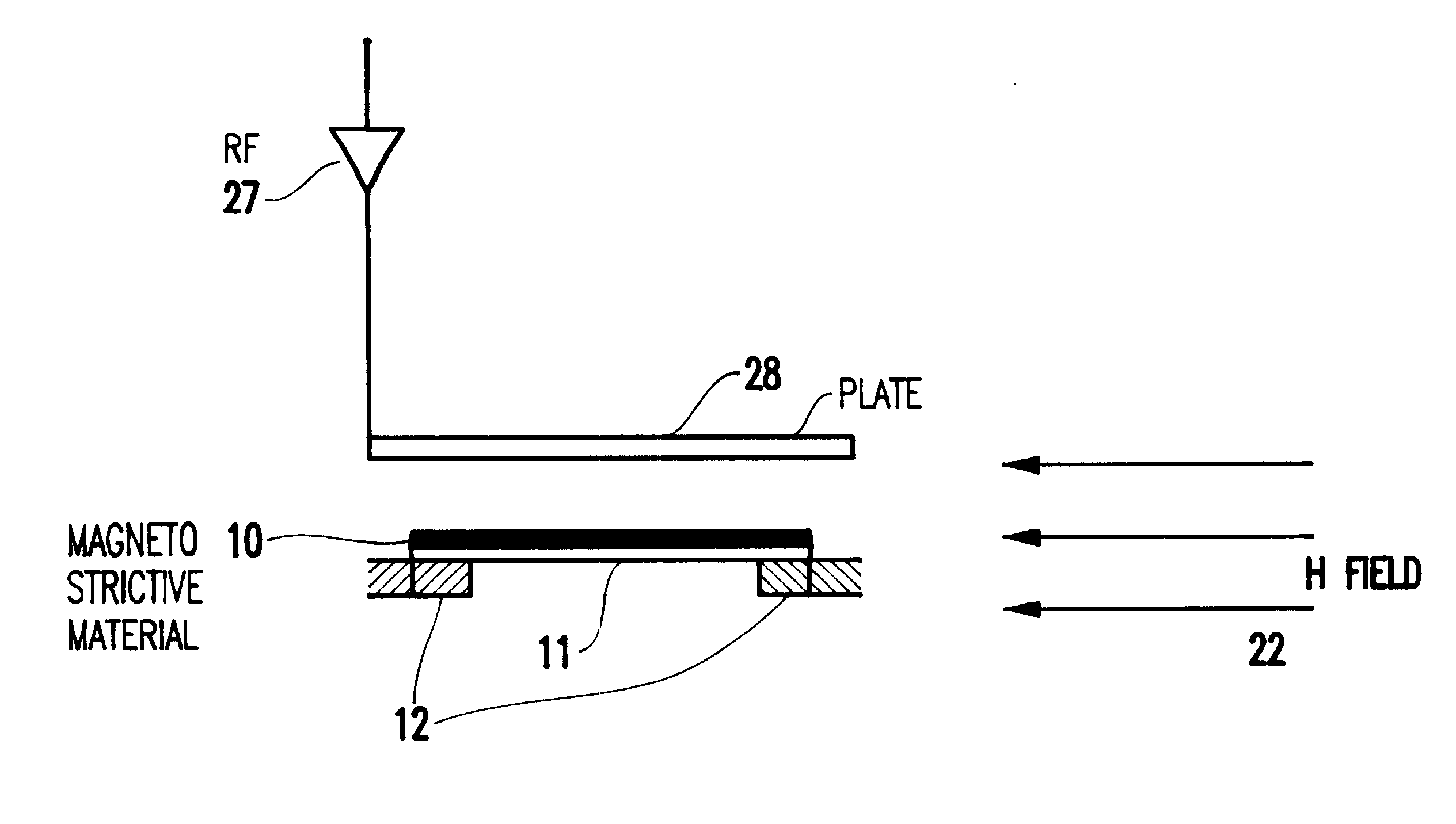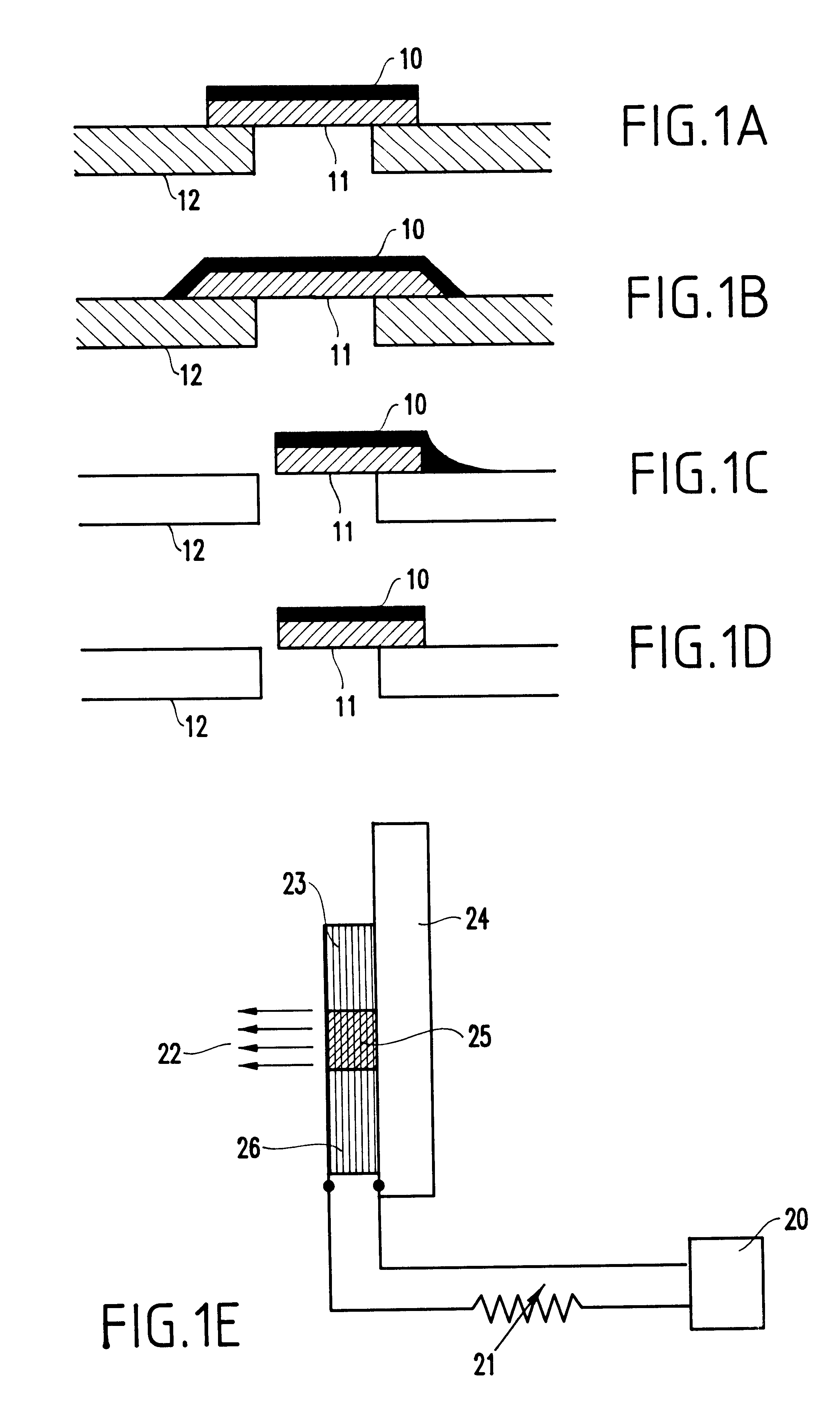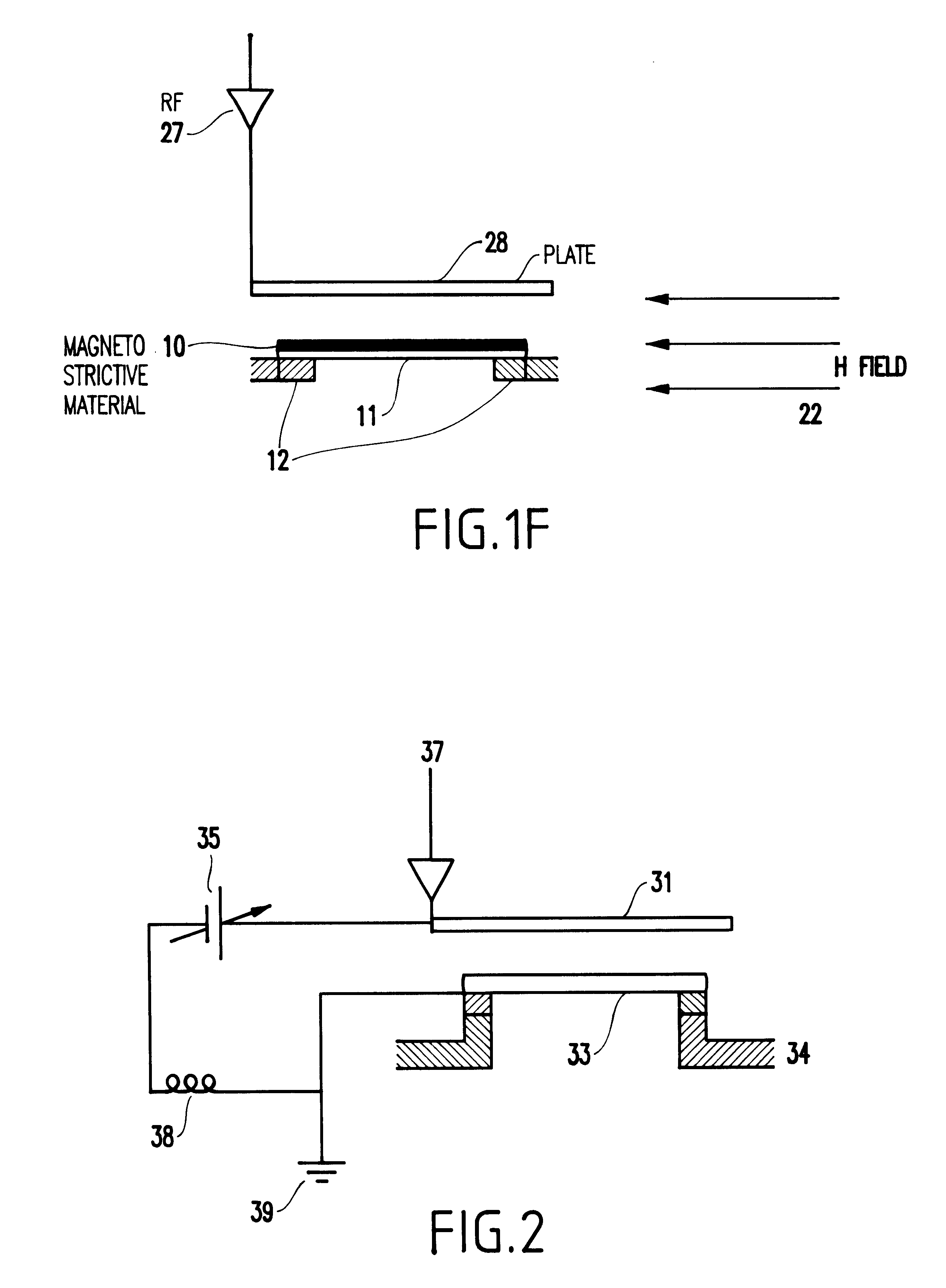Filter circuit including system for tuning resonant structures to change resonant frequencies thereof
a filter circuit and filter structure technology, applied in the direction of resonant circuit details, generators/motors, waveguide types, etc., can solve the problems of not allowing the circuit to be tuned, no known method for tuning the frequency of mechanical resonators, and inability to undertake trimming
- Summary
- Abstract
- Description
- Claims
- Application Information
AI Technical Summary
Problems solved by technology
Method used
Image
Examples
first embodiment
Turning now to FIGS. 1A-1F, a first embodiment will be described of the present invention. The present invention provides novel ways of tuning a resonant bar or cantilever 11, particularly those that are short along their major axis. This kind of bar or cantilever 11 resonator is particularly useful for telephony applications, but hitherto the invention, telephony applications utilizing these bar structures were too difficult to tune.
Thus, with the invention, for a fixed bar length, geometrical shape and thickness, there are well known sets of discrete and resonant frequencies that are proportional to the square root of the material's Young's modulus, E divided by the square root of the density times the reciprocal of the bar's length squared (e.g., see P. M. Morse, Vibration and Sound, Chapter IV, p. 151, McGraw-Hill, NY 1948).
To obtain tuning, a coating of a magnetostrictive film 10 is deposited (e.g., plated, vapor-deposited, ion bombarded, etc.) onto the resonant cantilever or b...
second embodiment
Referring to FIG. 2, a second embodiment of the invention will be described. The second embodiment of the invention uses the "Keyes effect", and is different from the first embodiment. It uses a single crystal semiconductor bar placed in an applied electric field, as opposed to the magnetic field of the first embodiment.
With this embodiment, it also becomes possible to tune the resonance of a bar or cantilever, here by causing changes in the elastic constants of a thin bar on the order of 1000 .ANG. or so. The Young's modulus E is proportional to the elastic constants so that the resonant frequency of the bar becomes dependent on the change in the elastic constants.
By applying a voltage to the electrode above and in close proximity to the cantilever, as shown in FIG. 2, the elastic constants change of a layer within the bar decreases in accordance with an effect known as the Keyes effect. To obtain this effect or change in elastic constants requires the use of single crystals (silic...
PUM
 Login to View More
Login to View More Abstract
Description
Claims
Application Information
 Login to View More
Login to View More - R&D
- Intellectual Property
- Life Sciences
- Materials
- Tech Scout
- Unparalleled Data Quality
- Higher Quality Content
- 60% Fewer Hallucinations
Browse by: Latest US Patents, China's latest patents, Technical Efficacy Thesaurus, Application Domain, Technology Topic, Popular Technical Reports.
© 2025 PatSnap. All rights reserved.Legal|Privacy policy|Modern Slavery Act Transparency Statement|Sitemap|About US| Contact US: help@patsnap.com



